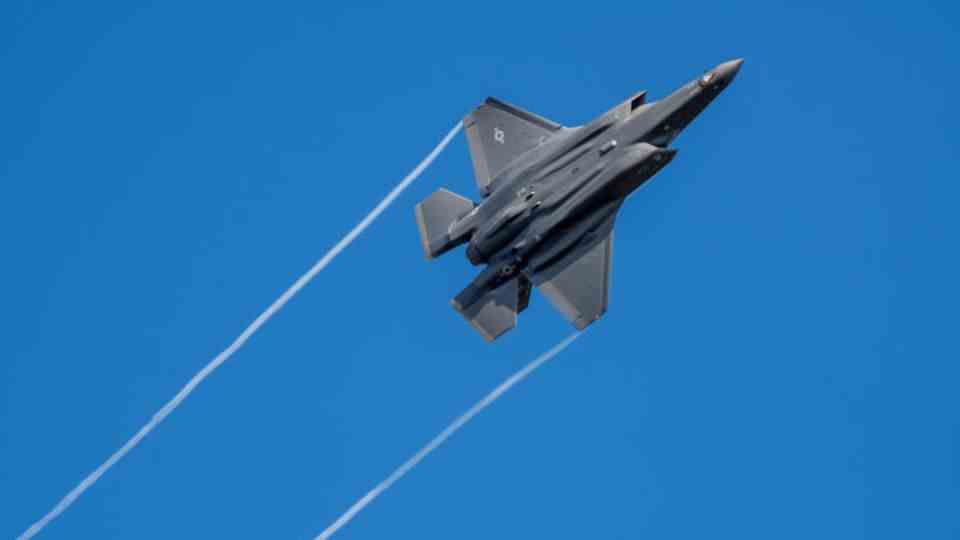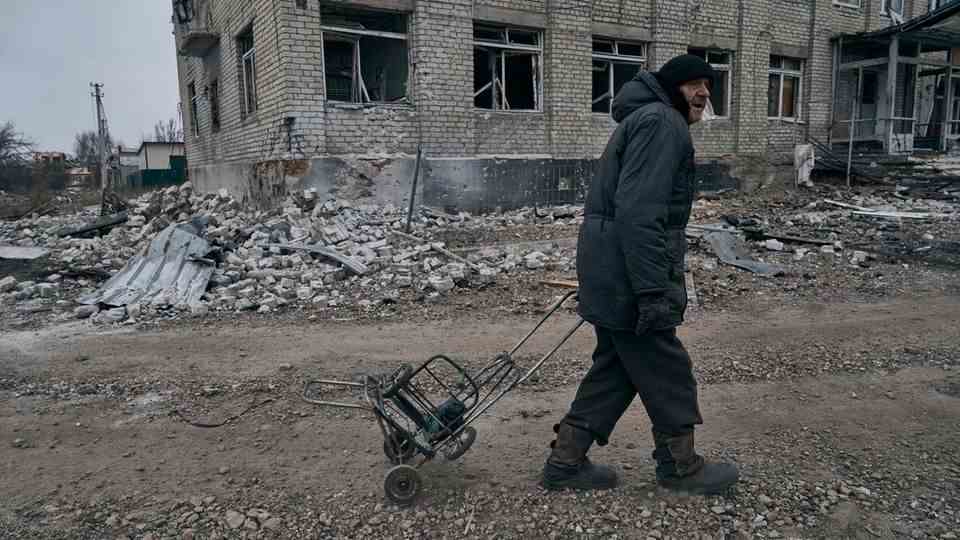analysis
War in Ukraine
The West supplies tanks and probably jets as well – but what if that is not enough?
Ukrainian soldiers operate a mortar near Bakhmut
© Anatolii Stepanov / AFP
The Russian winter offensive is expected at the end of February, and in the spring the Ukrainians are supposed to defeat the invaders and throw them out of the country. But if that doesn’t succeed, the West will no longer have any trump cards.
A few days ago, after much theatrical thunder, it was announced: the West is supplying heavy battle tanks to Ukraine. That was not surprising, without new material Kyiv would have lost the ability to continue the war at some point in the summer of 2023. And infantry fighting vehicles have already been promised. A type of weapon that can hardly be used sensibly without battle tanks.
The numbers of the promised tanks are still coming in. Individually they are not outstanding, but in total there will be more than the 300 main battle tanks demanded by Kyiv if you count the T72 variants from Poland and possibly Morocco.
At the same time, fighter jets and helicopters are being discussed. They will follow and then the next round begins: long-range missile weapons.
There is little doubt that Kyiv will get all this, the question is rather when and how much. The pledges for tanks are a clear sign that Kyiv will get the equipment it wants for a spring offensive. 300 main battle tanks are a huge “boom” – that corresponds to six to seven brigades according to the NATO standard. In view of the importance of infantry in the Ukraine war, rather more.
War in Ukraine: The “good case”
And what will that lead to? First the good course. Things are going the way we want them to in the West. Then the Russian army will bleed dry in the current offensive. Minor gains in territory are offset by significant losses. Kyiv has to give up a few towns, but both the regular army and the Wagnerians are losing their last professional soldiers and their equipment. The Ukrainian armed forces are under pressure, but the Russians are unable to make a real breakthrough. With the winter, Putin’s army is gone too. After that, it consists only of barely trained conscripts who are equipped with ancient tanks.
Kyiv can then lead several well-equipped corps against this burned-out remnant. Russia’s defeat would be programmed, the liberation of Crimea would be child’s play, as former Western generals already exult. A fall of Putin would be inevitable, as would a peace on Kiev’s terms.
HIMARS, Leopard 2 and Co.
Which country supplies which weapons to Ukraine?
The worse outcome
But what if that vision is a mirage? The West is going “all in” with the delivery of battle tanks and soon probably also of fighter jets. Then there is nothing with which the West does not support Ukraine – except by deploying its own troops. And even this no is undermined by the numerous volunteer formations. Kyiv receives ammunition and intelligence information, data on possible targets, volunteer fighters, trucks, tracked vehicles of all kinds, artillery, anti-tank missiles, anti-aircraft systems – the list goes on and on.
Even without an official state of war, the West is putting its full weight into this conflict. A victory for Kiev would be “our” victory, but a defeat would be “our” defeat.
But what if Russia’s losses do not exceed Ukraine many times over. But the human losses are roughly balanced, as the US Chief of Staff Mark Milley assumes.
On a small scale, you can see that some forecasts are overly optimistic. With the retreat from Kherson, it was prophesied that thousands of soldiers would remain behind and be taken prisoner. As a result, only a few prisoners were taken. The Soledar case was sold with the message that the Wagner forces deployed had been effectively wiped out and that the group would be inactive for months given the losses. In fact, a few weeks later the allegedly dead Wagner mercenaries pushed Kiev’s troops out of many towns and are now threatening to encircle Bakhmut as well.
Who lasts longer
Assuming roughly equal losses on both sides, the picture changes dramatically. Despite all the losses, Russia can continue to import heavy equipment such as tanks and artillery from its own country. The potential of active tanks is still in the thousands. At the same time, decommissioned tanks are refurbished from the magazines in a three-shift operation. It is therefore unlikely that Putin’s troops will soon only be equipped with equipment from the 1950s. On the contrary, it is to be expected that there will be a next wave of mobilization of 300,000 and that the numerical ratio at the front will tip over. Moscow can then use more men than Ukraine in central sections. This is an invaluable advantage, because the front, which is around 1,000 kilometers long, consists largely of gaps that are hardly manned.
All of this only serves to prepare for a major winter offensive, which is expected around the anniversary of the attack, i.e. at the end of February. The West’s calculus is based on the fact that this effort will not lead to any decisive territorial gains, but will lead to considerable Russian losses. Whether this assumption is correct will be seen in mid-March.
At the same time, the Russians are digging in in anticipation of the Ukrainian offensive. Then they will enjoy the same advantages in defense of the occupied territory as the Ukrainians, who have turned the villages and towns of Donbass into tunneled fortresses, now enjoy. A bold breakthrough like in the autumn east of Kharkiv should no longer be possible.
Suppose that the sequence of first a failed Russian offensive and a successful Ukrainian one does not occur in this way. And Putin’s troops survive the onslaught in the spring without substantial losses of territory, the situation becomes tight. Kyiv is less able to take a bloody stalemate than Moscow. The West has then – essentially – given everything it can, apart from engaging in open warfare with its own troops. After that, it will be more difficult for the West to keep feeding this war of fatigue with money and material, and Kyiv will not always be able to raise new troops.
The war will be decided this spring, even if hostilities continue.




